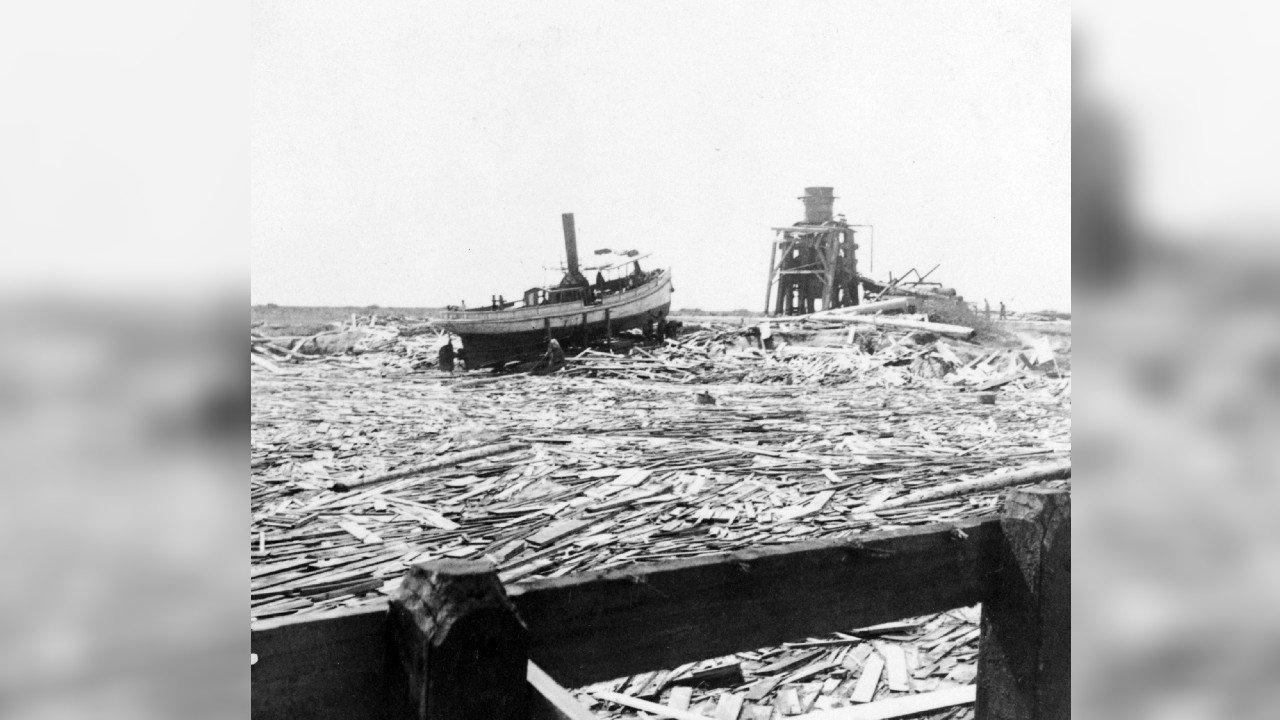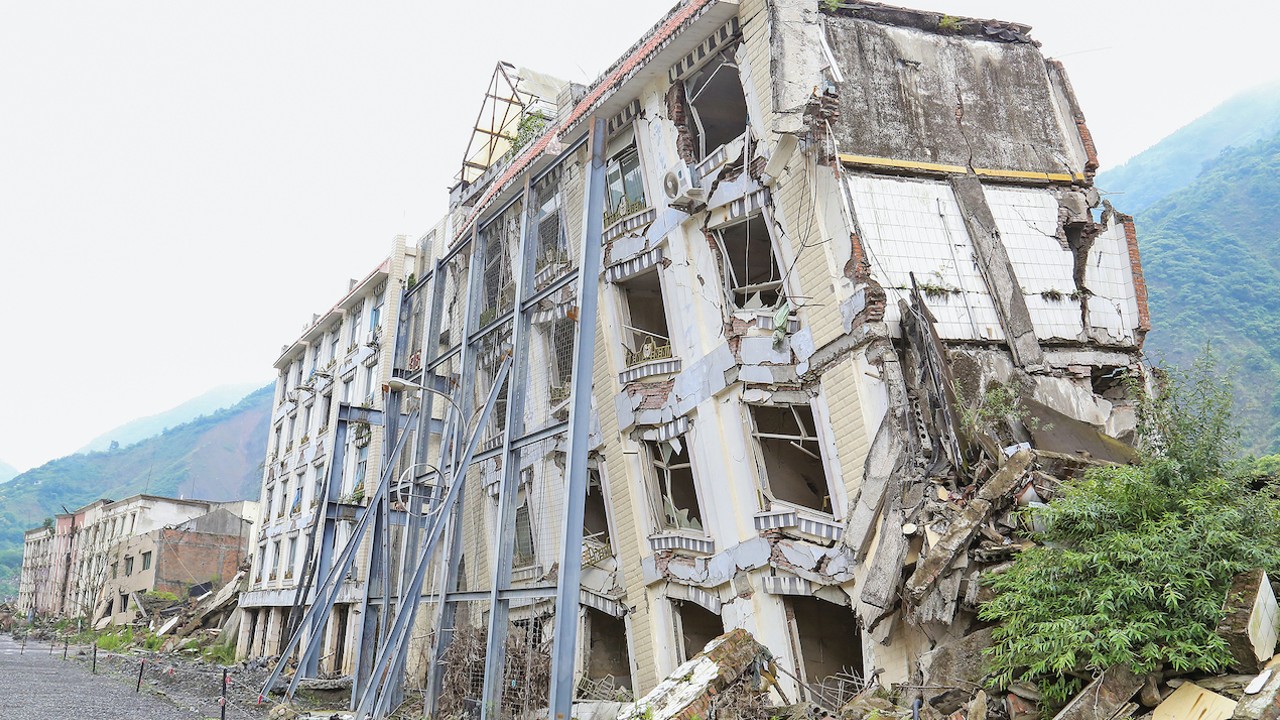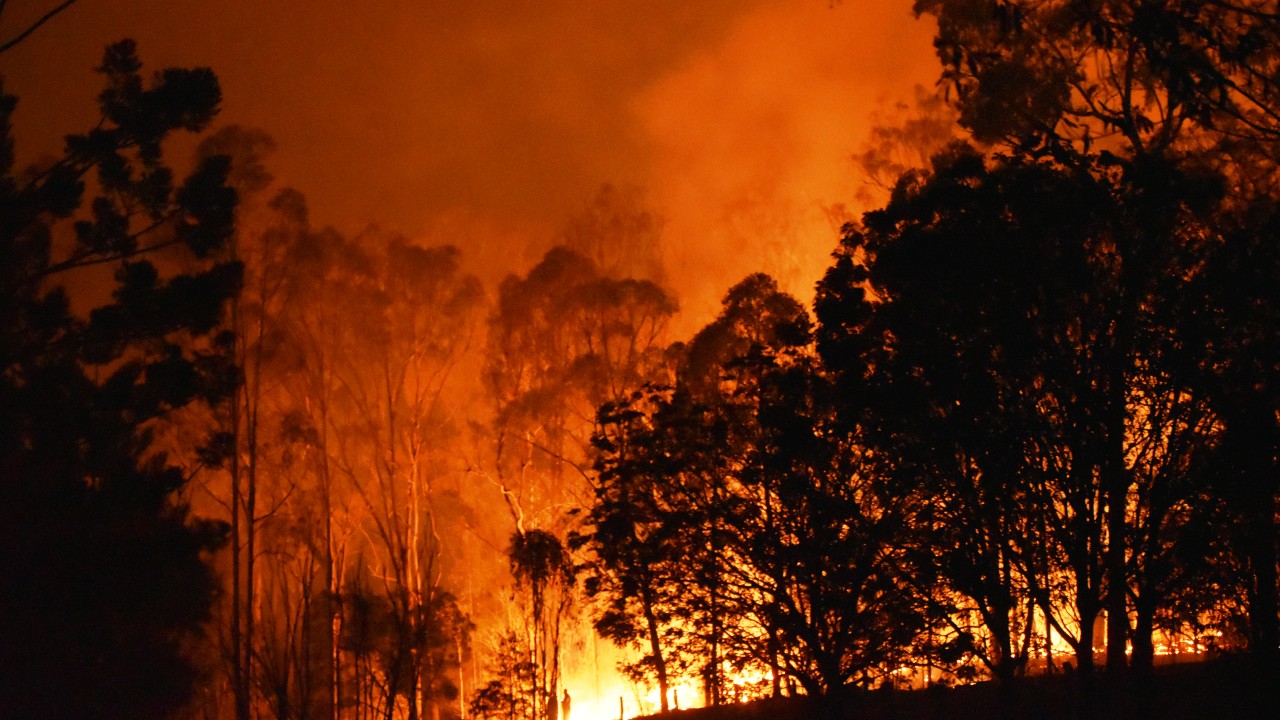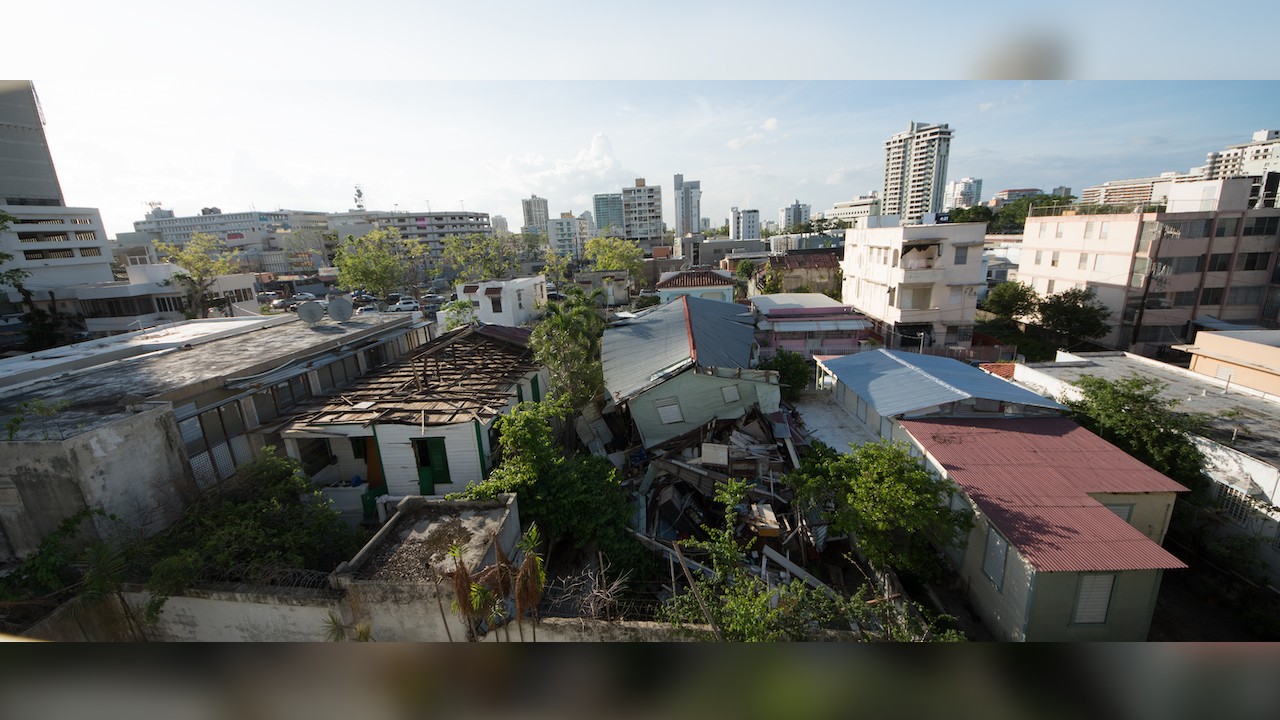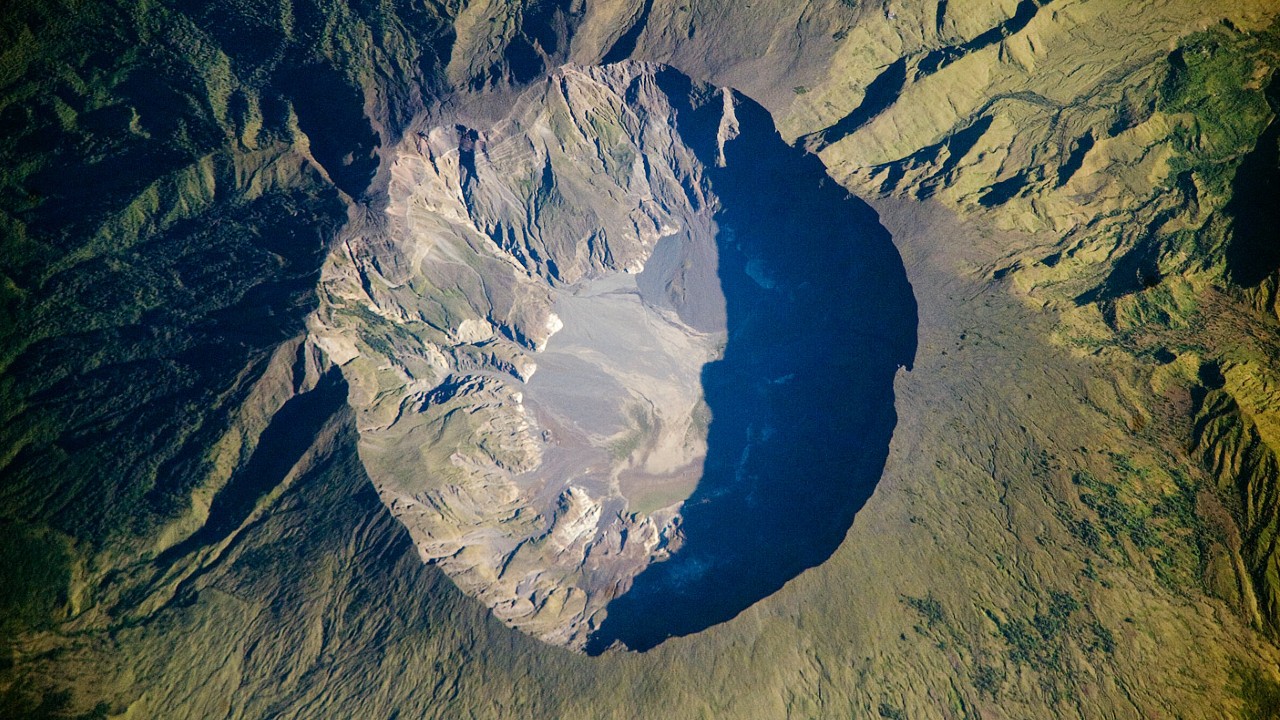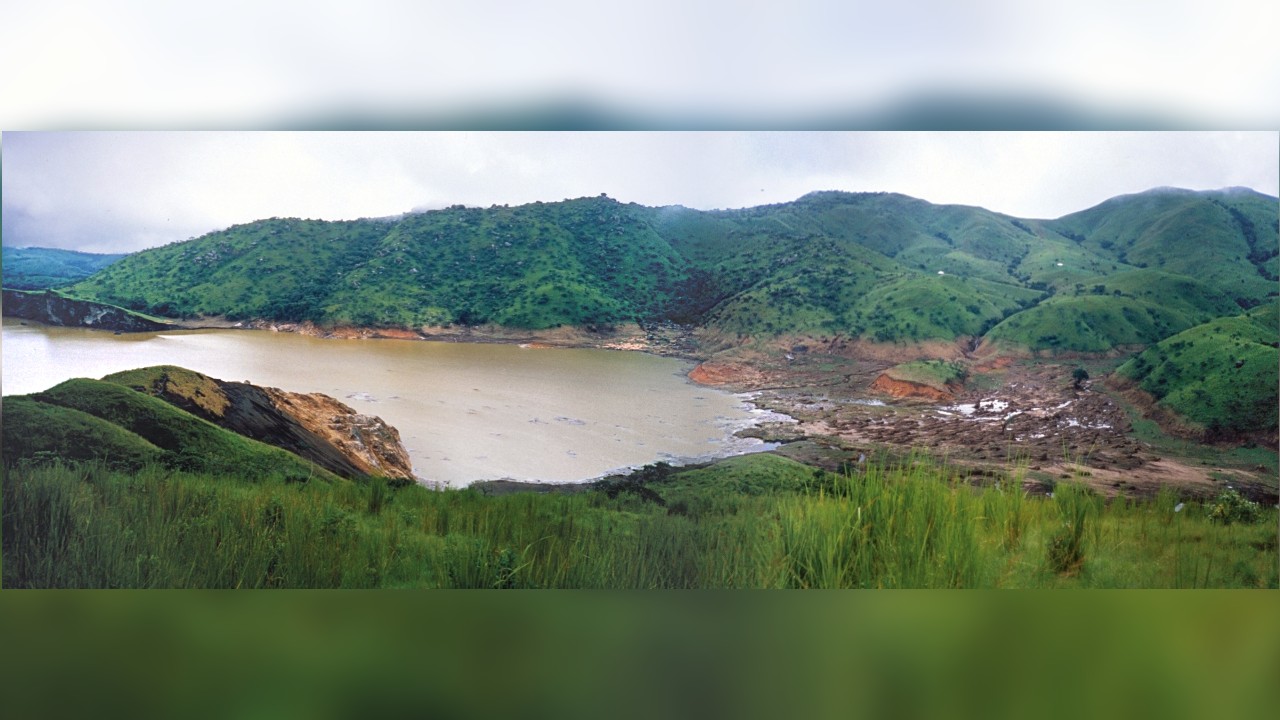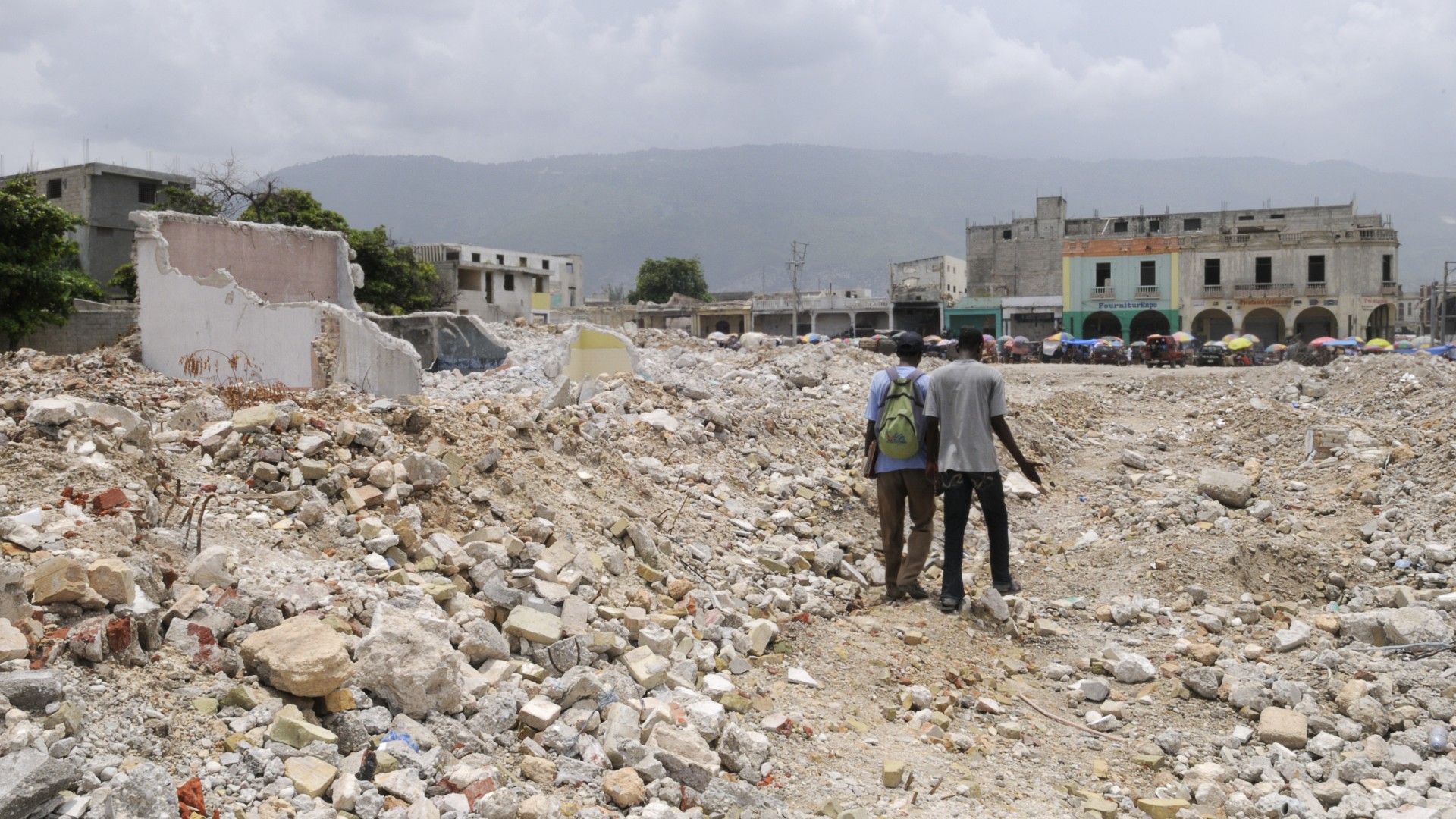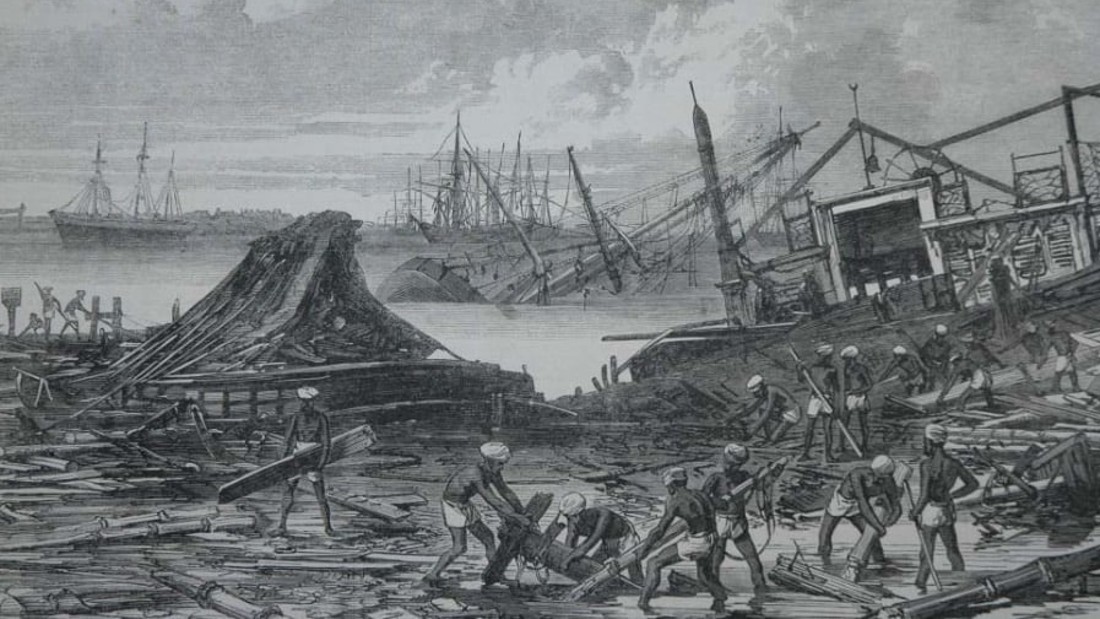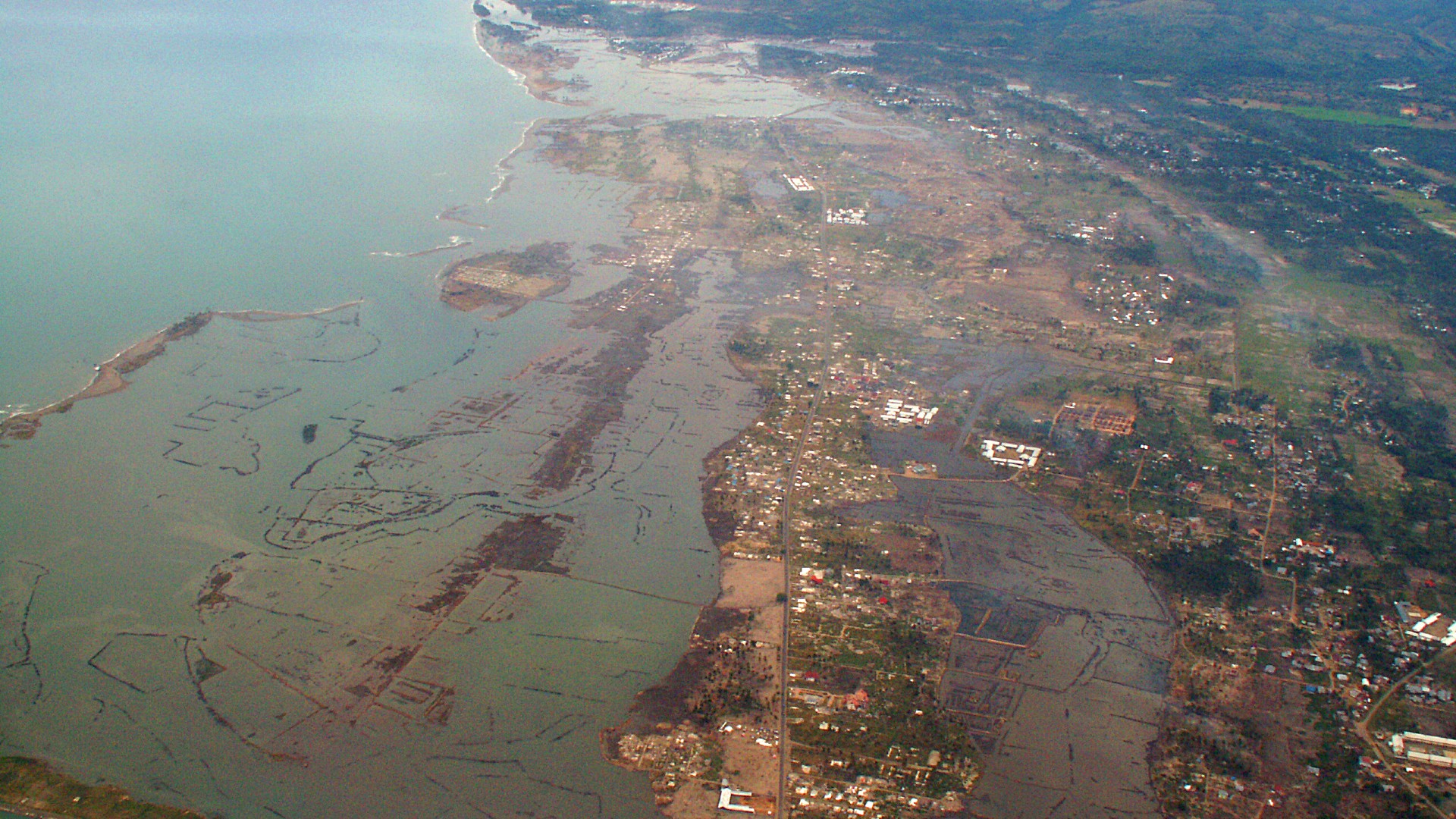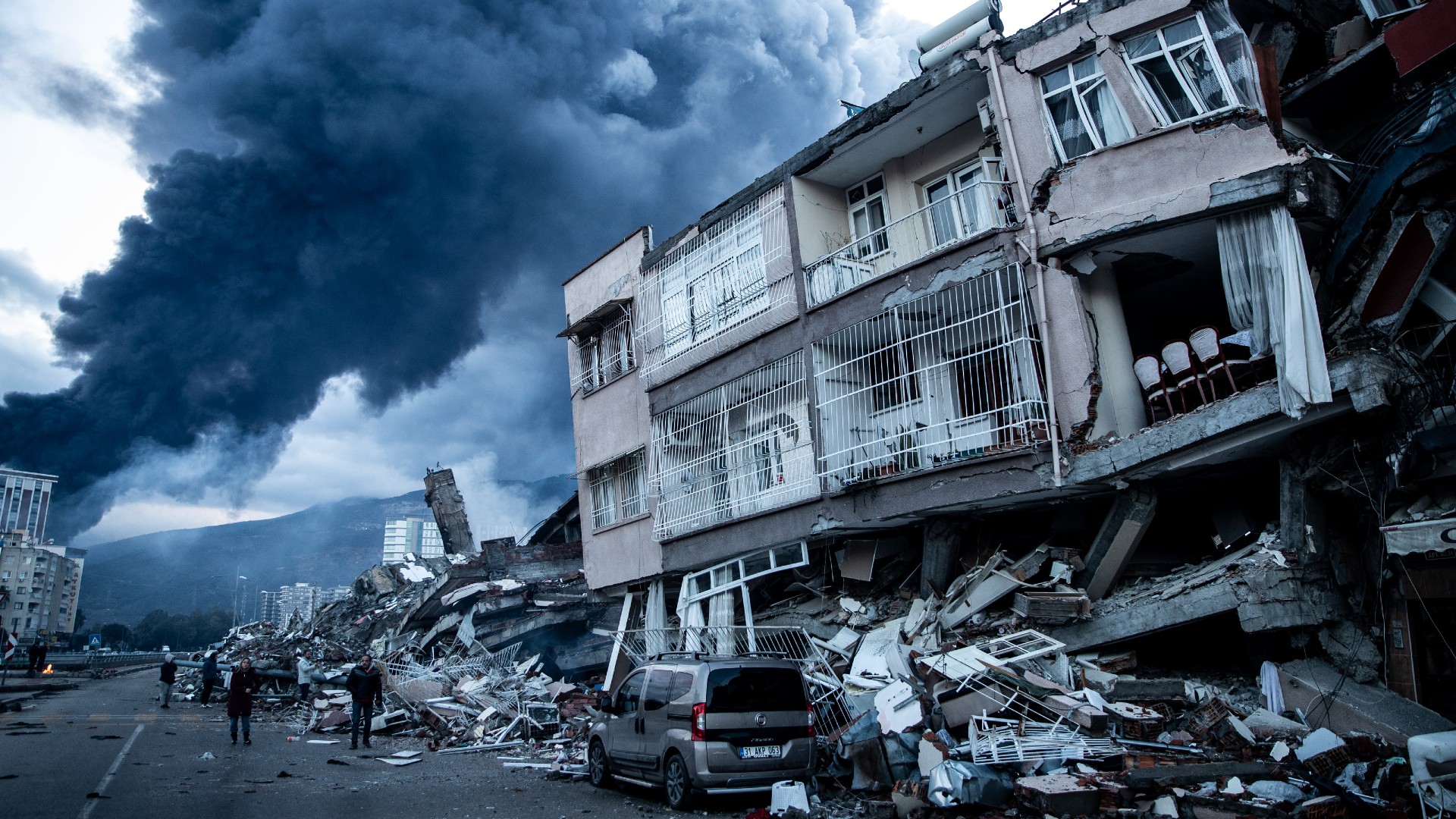13 of the biggest natural disasters in history
These natural disasters caused widespread death and destruction.

Natural disasters are devastating events that have the potential to cause huge amounts of damage and loss of life. Globally, around 60,000 people die each year as a result of disasters such as droughts, floods, earthquakes and tsunamis, and a further 150 million people are impacted by these events, Live Science previously reported.
Over the past decade, global natural disasters have accounted for 0.1% of total deaths, according to data from the University of Oxford. While the number of deaths from natural disasters has declined over the past century, these events continue to cause significant amounts of loss and damage.
Here are 13 of some of the largest, deadly and costly natural disasters throughout modern history.
1900 Great Galveston Storm
On Sept. 8, 1900, a storm swept through Galveston, an island off the coast of Texas. At the time, Galveston was one of Texas's biggest port cities, but a hurricane with 140 mph (225 km/h) winds swept it off the map. It's estimated that 3,600 houses and 600 businesses were reduced to rubble across 1,900 acres (770 hectares), according to the Texas Historical Foundation.
Although it remains unclear exactly how many people perished during the hurricane, the final death toll was estimated to be between 6,000 and 8,000 people — one-sixth of the island's population, according to the foundation.
Related: Bombogenesis: What's a 'Bomb Cyclone'?
2008 Sichuan earthquake
In 2008, a deadly 7.9-magnitude earthquake hit several regions of south-central China. It caused multiple landslides and building collapses that killed almost 70,000 people across Sichuan province, according to the Asian Disaster Reduction Center.
Get the world’s most fascinating discoveries delivered straight to your inbox.
According to research published in the journal Landslides Hazards, Risks, and Disasters, the landslides created at least 828 makeshift dams across rivers and streams in the region, which caused widespread flooding. The situation was exacerbated by heavy rainfall before military personnel removed these accidental dams, according to NASA.
2019 and 2020 Australia wildfire
Between 2019 and 2020, Australia experienced some of the deadliest wildfires in recent history. The official death toll for the wildfires was 33, according to the Parliament of Australia. A further 445 people died from conditions related to smoke inhalation from the wildfires, and 4,000 people were admitted to hospital, according to the BBC.
Between September 2019 and March 2020, 46 million acres (19 million hectares) of forests in southeast Australia were burnt, according to the Center of Disaster Philanthropy. Generally, the majority of wildfires are believed to have been ignited by lightning, according to the Parliament of Australia; however, according to research conducted by the University of Oxford, the risk of intense fire weather during the bushfire season in southeastern Australia has increased by 30% since 1900 as a result of climate change.
2017 Hurricane Maria
On Sept. 20, 2017, Puerto Rico was hit by the deadliest U.S.-based natural disaster in the last 100 years, according to NBC News. Hurricane Maria had the highest average rainfall of all 129 storms that have hit Puerto Rico in the past 60 years, according to the American Geophysical Union.
The hurricane dropped around 41 inches (104 centimeters) of rain onto the island, which caused devastating floods. Research published in the New England Journal of Medicine estimated that the total death toll caused by Hurricane Maria was more than 4,600. Hurricane Maria was also the third most costly tropical cyclone in the U.S., causing around $98 billion worth of damage, according to the National Oceanic and Atmospheric Administration (NOAA).
1815 Mount Tambora eruption
When the Mount Tambora volcano in Indonesia blew its top on April 10, 1815, it was the climax of the largest eruption in recorded history. It's estimated that 36 cubic miles (150 cubic km) of exploded rock blasted into the atmosphere and could be seen from as far as 808 miles (1,300 km) away, according to NASA.
The explosion expelled so much volcanic ash into Earth's atmosphere that it reduced the amount of sunlight reaching Earth's surface. As a result, the temperature in the Northern Hemisphere at the time, fell by 1 degree Fahrenheit (approx 0.56 degrees Celsius), according to NOAA, and 1816 became known as "the year without a summer." Records indicate that the eruption caused 11,000 immediate deaths from pyroclastic flows (fast-moving solid lava, hot gas and ash), and a further 100,00 people died from food shortages over the preceding decade caused by the reduction in sunlight, according to NOAA.
Related: Mount Vesuvius & Pompeii: Facts & history
1986 Lake Nyos eruption
In 1986, lethal clouds of carbon dioxide (CO2) bubbled up from the depths of Lake Nyos in northwest Cameroon and caused the deaths of almost 1,800 people and 3,000 livestock, according to the American Geophysical Union. Lake Nyos is sat on top of a magma chamber, which leaks CO2 into the water above. In 1986, a sudden eruption of 1.6 million tons (approx 1.5 million metric tonnes) of CO2 gas burst from the lake, in an event known as a limnic eruption.
The gas cloud rolled down the surrounding hillsides and smothered neighboring villages, according to the University of Wisconsin. Eight hundred and forty-five people survived the event but were taken to hospital, 19% of whom were treated for lesions and bullae (blister-like protrusions on the skin) caused by the CO2, according to the British Medical Journal.
1970 Huascarán avalanche
On May 31, 1970, a 7.9-magnitude earthquake caused one of Peru's deadliest landslides, according to the BBC. The quake emanated around 22 miles (35 km) from Mount Huascarán, Peru's highest mountain. The force of the earthquake caused massive landslides that buried surrounding towns, in particular Yungay and Ranrahirca.
It's estimated that cascading mountain ice and rocks sped down Huascarán at around 100 mph (160 km/h), including a 772-ton (700 metric tonnes) boulder that crashed into Ranrahirca, according to the BBC. A total of 70,000 people lost their lives, according to the U.S. Geological Survey.
2005 Kashmir earthquake
On Oct. 8 ,2005, Kashmir in Pakistan was hit by a 7.6-magnitude earthquake, according to the Earth Observatory of Singapore. Landslides caused by the earthquake buried several towns and villages, including Balakot and Muzaffarabad.
Around 90% of all buildings in Balakot were demolished by the quake, according to the BBC. In total, it's estimated that 3 million homes were destroyed throughout Kashmir; more than 75,000 people were killed and a further 100,000 were injured, according to NASA. It's believed that the sudden and rapid release of seismic stress between the Indian and Eurasian tectonic plates was the cause of the earthquake.
2010 Haiti earthquake
On Jan. 12, 2010, a magnitude 7.0 earthquake struck near the town of Léogâne, Haiti, just 16 miles (25 kilometers) from Port-au-Prince, the nation's capital.
Port-au-Prince was devastated, and at least 220,000 people died, according to the United Nations. (Some estimates put the death toll at up to 316,000). Another 300,000 people were injured, and 1.5 million were left homeless. The quake happened in a region where the Caribbean plate rubs against the North American plate, making it prone to large temblors. The situation was made worse because the quake hit a populated area. Soon after, a cholera epidemic swept through Haiti — at the time the worst cholera epidemic in history, according to the Centers for Disease Control and Prevention (CDC). It was worsened by a lack of sanitation in the devastated region and killed around 10,000 people, with around 820,000 cases, according to the CDC.
1839 Coringa cyclone
An 1839 cyclone changed Coringa in southern India forever. In the early 1800s, this city on the coast of Andhra Pradesh was a bustling port, according to the University of Rhode Island (URI) Graduate School of Oceanography's Hurricanes and Society website. But on Nov. 25, 1839, an enormous tropical cyclone, or typhoon, hit Coringa, causing a 40-foot-high (12 meters) storm surge. Much of the city was wiped off the map, and approximately 300,000 people drowned. Coringa was never rebuilt to its former size.
The destruction at Coringa gave rise to the term that now describes both hurricanes and typhoons: cyclone. According to the URI Graduate School of Oceanography, a British East India Company official named Henry Piddington coined the term after seeing the damage to the once-busy port.
1931 China floods
Between June and August 1931, rivers in Central China began to swell, fed by an unusually rainy season. Along the Yangzi, Huai and Yellow rivers, as well as the artificial Grand Canal linking the Yangzi and Yellow, flooding began to inundate riverside cities and villages. At one point, an area larger than England was underwater.
Over 100,000 people are thought to have drowned. Estimates of the final death toll vary widely, especially because tens of thousands died in the months after the flooding, when cholera swept through camps of refugees. Malaria, smallpox and typhus also killed many people, according to a 1932 League of Nations report. Up to 4 million people may have died in total, Chris Courtney, an environmental and social historian, wrote in "The Nature of Disaster in China: The 1931 Yangzi River Flood" (Cambridge University Press, 2018).
2004 Indian Ocean earthquake and tsunami
The deadliest tsunami in recorded history hit on Dec. 26, 2004, triggered by a magnitude 9.1 earthquake off the west coast of Sumatra, Indonesia. The impacts were widespread and horrific: Waves up to 98 feet (30 ms) high hit Aceh, Indonesia, within minutes of the quake, according to the Australian Institute for Disaster Resilience, and tsunami waves echoed around the Indian Ocean for hours after the quake. The United Nations estimates that 227,000 people died.
The immediate economic impact was estimated at $9.9 billion, according to the UN, but the tsunami also had long-lasting impacts, such as saltwater contamination of agricultural land. The devastation inspired the creation of the Indian Ocean Tsunami Warning System, which now spreads tsunami warnings throughout the region within minutes of a large undersea earthquake occurring.
2023 Turkey-Syria earthquake
In the predawn hours of Feb. 6, 2023, a magnitude 7.8 earthquake struck south-central Turkey near the town of Gaziantep. It was the strongest quake to hit Turkey since 1939, and the damage was devastating. More than 50,000 people are confirmed to have died in Turkey and Syria, according to Al Jazeera. More than 1.9 million people were displaced in the month after the quake, which was followed by a series of strong aftershocks. According to Al Jazeera, more than 173,000 buildings collapsed or were damaged in Turkey alone.
According to the U.S. Geological Survey (USGS), the quake and its aftershocks occurred on a long strike-slip fault at a shallow depth. Shallow quakes produce more intense shaking. Many buildings in the region were made of cement, which easily crumbles during earthquakes. According to the Associated Press, lax enforcement of building codes also contributed to the widespread damage.
Additional resources

Stephanie Pappas is a contributing writer for Live Science, covering topics ranging from geoscience to archaeology to the human brain and behavior. She was previously a senior writer for Live Science but is now a freelancer based in Denver, Colorado, and regularly contributes to Scientific American and The Monitor, the monthly magazine of the American Psychological Association. Stephanie received a bachelor's degree in psychology from the University of South Carolina and a graduate certificate in science communication from the University of California, Santa Cruz.


